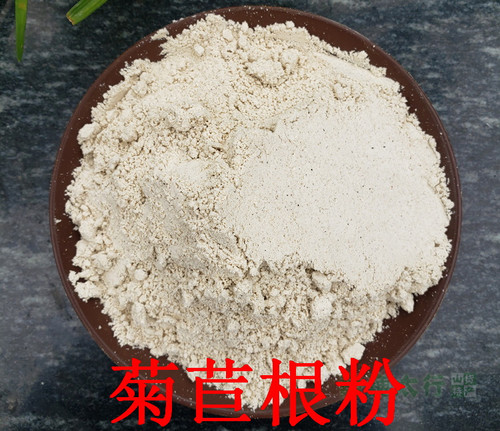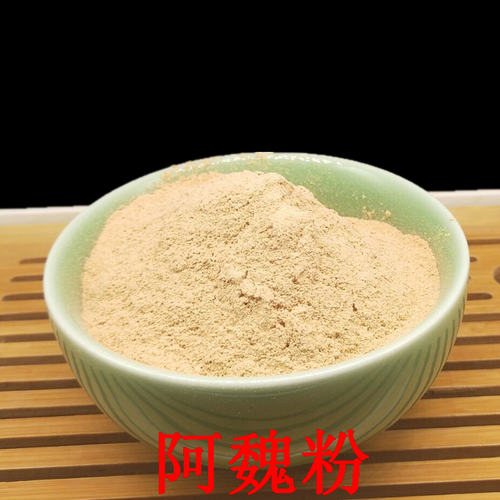Product Overview
Parts used: Dried root
TCM category: Herbs that cool the Blood
TCM nature: Cold
TCM taste(s): Bitter
Meridian affinity: Stomach Liver
Scientific name: Isatis tinctoria
Other names: Dyer's woad, Glastum
Use of woad roots (Ban Lan Gen) in TCM
Please note that you should never self-prescribe TCM ingredients. A TCM ingredient is almost never eaten on its own but as part of a formula containing several ingredients that act together. Please consult a professional TCM practitionner, they will be best able to guide you.
Preparation: Remove impurities, wash, soak in water, cut in thick slices and dry.
Dosage: 10 - 30 grams
Main actions according to TCM*: Expels Heat and Fire toxicity. Cools the Blood. Dispels Damp-Heat in the Lower Burner.
Primary conditions or symptoms for which woad roots may be prescribed by TCM doctors*: Mumps Pharyngitis Laryngitis Fever Erysipelas Carbuncles
Contraindications*: This herb should not be used by those who are without true Fire toxicity.
Common TCM formulas in which woad roots are used*:
For severe colds, flu or upper respiratory tract infections combine woad roots with honeysuckle flowers (Jin Yin Hua), forsythia fruits (Lian Qiao), platycodon roots (Jie Geng), greater burdock fruits (Niu Bang Zi), wild mint (Bo He), fermented soybeans (Dan Dou Chi), lophatherum herbs (Dan Zhu Ye), common reed rhizomes (Lu Gen), liquorice (Gan Cao) and notopterygium roots (Qiang Huo).
For Heat in the Stomach and Heart with painful obstruction of the throat, sores in the tongue, mouth and throat combine woad roots with woad leaves (Da Qing Ye), ningpo figwort roots (Xuan Shen), gypsum (Shi Gao), goldthread rhizomes (Huang Lian) and cape jasmine fruits (Zhi Zi).
Key TCM concepts behind woad roots (Ban Lan Gen)'s properties
In Traditional Chinese Medicine (TCM), woad roots are plants that belong to the 'Herbs that cool the Blood' category. Herbs in this category are used to clear inflammatory and infectious conditions, referred to as 'Internal Heat' in TCM. This is why most of the herbs in this category will have both antibacterial and antiviral properties. In TCM one has too much 'Heat' in their body as a result of a deficiency of 'Yin' (which is Cold in nature, see our explanation on Yin and Yang) or, more commonly, an excess of Yang (Hot in nature). Herbs that cool the Blood treat the latter and as such tend to be Cold or Neutral in nature.
As suggested by its category woad roots are plants that are Cold in nature. This means that woad roots typically help people who have too much "heat" in their body. Balance between Yin and Yang is a key health concept in TCM. Those who have too much heat in their body are said to either have a Yang excess (because Yang is Hot in nature) or a Yin deficiency (Yin is Cold in Nature). Depending on your condition woad roots can help restore a harmonious balance between Yin and Yang.
Woad roots also taste Bitter. The so-called "five elements" theory in Chinese Medicine states that the taste of TCM ingredients is a key determinant of their action in the body. Bitter ingredients like woad roots tend to have a cleansing action on the body by clearing heat, drying dampness and promoting elimination via urination or bowel movements.
The tastes of ingredients in TCM also determine what organs and meridians they target. As such woad roots are thought to target the Stomach and the Liver. In TCM the Stomach is responsible for receiving and ripening ingested food and fluids. It is also tasked with descending the digested elements downwards to the Small Intestine. The Liver on the other hand is often referred as the body's "general" because it is in charge of regulating the movements of Qi and body fluids. It also takes a leading role in balancing our emotions.






